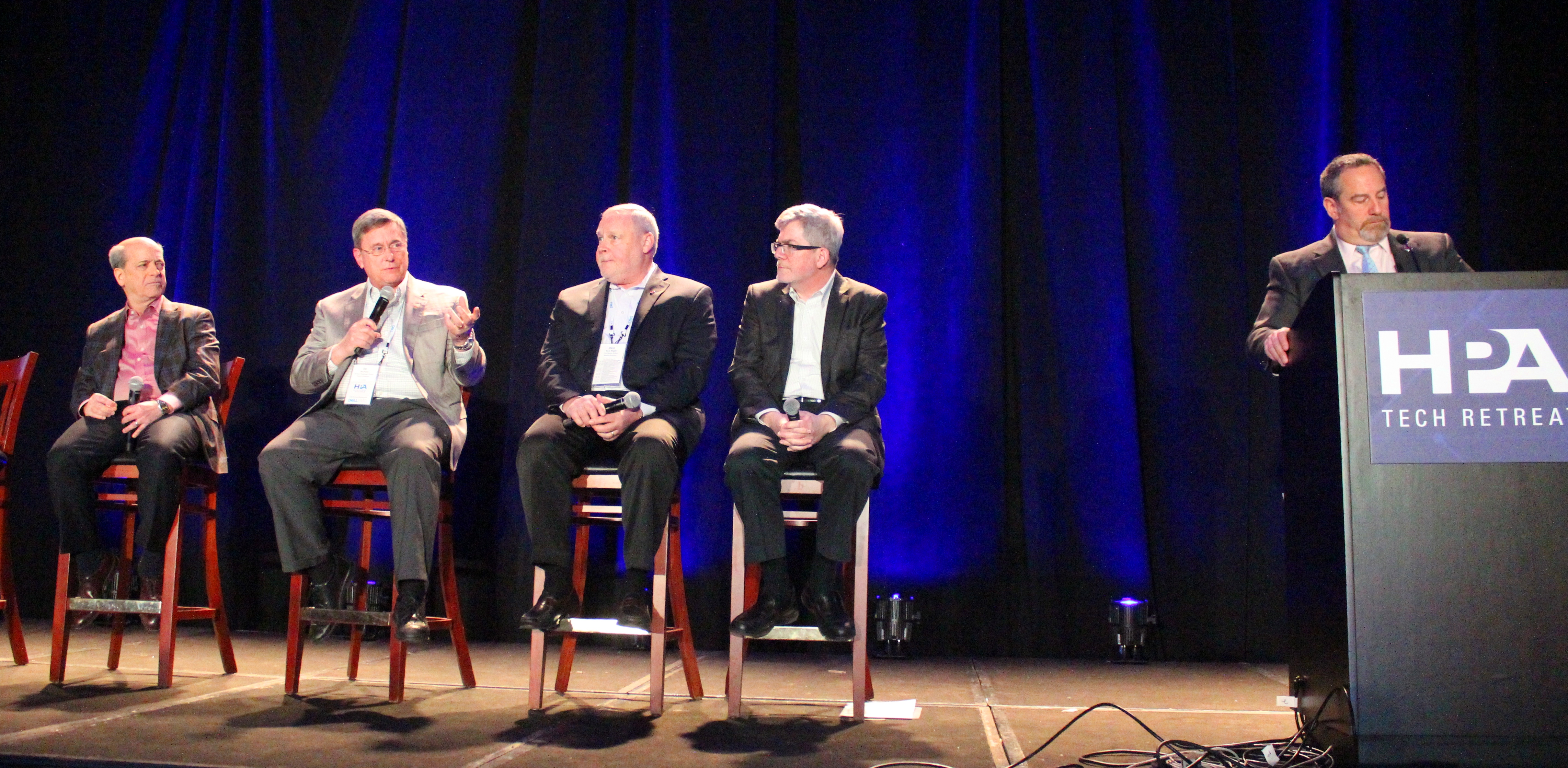NAB Developing ‘Best Practices’ Guidelines for Next Gen TV
PALM DESERT, Calif.—A standard feature of the annual Hollywood Professional Association (HPA) Tech Retreat being held here is the Wednesday Broadcasters’ Panel. At this year’s conference, four representatives from the broadcasting industry—Del Parks, senior vice president/CTO for Sinclair Broadcast Group; Cox Media’s Dave Siegler, vice president of technical operations for Cox Media Group; Richard Friedel, executive vice president and general manager of engineering and operations for Fox Network; and Skip Pizzi, vice president of technology education and outreach for NAB—were quizzed about current broadcasting issues by MediaKind Senior Vice President of Technology Matthew Goldman, who placed the rollout of ATSC 3.0 service at the top of his list.

All panelists agreed that moving to this advanced television service would be neither simple nor easy, as a number of factors are in play that make it anything but easy. The foremost of these is lack of the expansion spectrum that broadcasters were provided with in the analog-to-digital transition in 2009. With the shortage of spectrum that now exists, a change by one station in an individual market involves all of the TV broadcast operations there.
“It’s not a single station matter; it’s a market exercise,” said Parks. “There are five, seven, or maybe 10 stations in a given market and there has to be a high degree of technical coordination within that market in order to clear spectrum for 3.0 services. [Once this is done] it’s essentially the installation of a different exciter and possibly some different transmitter plumbing.”
Asked about the NAB’s involvement in helping to initiate ATSC 3.0 broadcasting in the United States, Pizzi stated that his organization is now actively working on a program to assist broadcasters in combining their efforts to launch 3.0 on the air in their markets.
“This has to be a team effort, and that’s a little unusual,” said Pizzi, noting the competitive nature of the broadcasting business. He stated that NAB is developing a “best practices” guide to assist stations in transitioning to next-generation broadcasting, as well as offering guidance to state broadcasting organizations and providing information to local media organizations to help educate viewers as to the changes that will be occurring with television service in their markets.
TIMELINES FOR 3.0 LAUNCHES
Asked about Fox’s plans to transition to 3.0, Friedel stated that there was an initiative to launch service in a number of the larger markets served by Fox, with a goal of completion by Christmas 2020. Parks said that his group had committed to establishing next-gen service in 25 to 30 markets by the end of 2019.
The professional video industry's #1 source for news, trends and product and tech information. Sign up below.
However, when Goldman mentioned the absence of 3.0 capable receivers at January’s CES, all panelists agreed that this could also be a handicapping factor in rolling out the new service.
“I understand that there won’t be that many sets out there capable of 3.0 in the first year,” said Parks.
Pizzi agreed, likening the situation as it exists now to a classic case of “chicken and egg,” with set manufacturers reluctant to offer 3.0 sets for sale when few, if any broadcasters, are broadcasting in 3.0, and broadcasters being equally reluctant to commit to transmitting next-gen TV signals when there are no viewers.
“I think broadcasters, in general, realize that we‘ve got to be the chicken," Pizzi said. “We’ve got to be out there first and put the services up on the air proactively and hope the manufacturers will build the receivers.”
Goldman suggested that lack of a government mandate to move to 3.0 operation was also possible stumbling block. Pizzi agreed.
“In Korea where there is a mandate, they have a roadmap,” he said. “And even there they’re going to take until 2027 before they have everything turned on in 3.0 and then start turning off 1.0 services. So, we shouldn’t expect with a voluntary transition—particularly where we have to do it with market-by-market cooperation—for it not to take a good 10 years to happen.”
For a comprehensive source of TV Technology’s ATSC 3.0 coverage, see our ATSC3 silo.
James E. O’Neal has more than 50 years of experience in the broadcast arena, serving for nearly 37 years as a television broadcast engineer and, following his retirement from that field in 2005, moving into journalism as technology editor for TV Technology for almost the next decade. He continues to provide content for this publication, as well as sister publication Radio World, and others. He authored the chapter on HF shortwave radio for the 11th Edition of the NAB Engineering Handbook, and serves as contributing editor of the IEEE’s Broadcast Technology publication, and as associate editor of the SMPTE Motion Imaging Journal. He is a SMPTE Life Fellow, and a member of the SBE and Life Senior Member of the IEEE.

